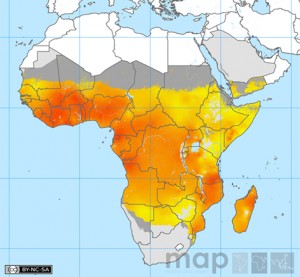QUESTION:
What is malaria?
ANSWER:
Malaria is a disease caused by a parasitic single-celled animal known as Plasmodium. There are different species of Plasmodium, which cause different kinds of malaria. The main types which infect humans are P. falciparum, P. vivax, P. ovale and P. malariae. The parasite is transmitted by certain species of mosquito; the parasite lives in the human blood stream and so goes in to the mosquito when the insect feeds. When the same individual mosquito then feeds on another person, it transmits parasites into a new host.
The symptoms of malaria are caused by the actions that the parasite undertakes while in the human host. For example, part of its reproductive cycle involves invading and then multiplying inside red blood cells. Once several cycles of reproduction have occurred, the new parasites burst out of the red blood cell, destroying it. The cycles are times so that all the new parasites burst out of the red blood cells at the same time; this coordinated destruction of the red blood cells, either every 24, 48 or 72 hours, depending on the malaria species, causes the one day, two day or three day cycles of fevers and chills that characterize malaria infection episodes.
